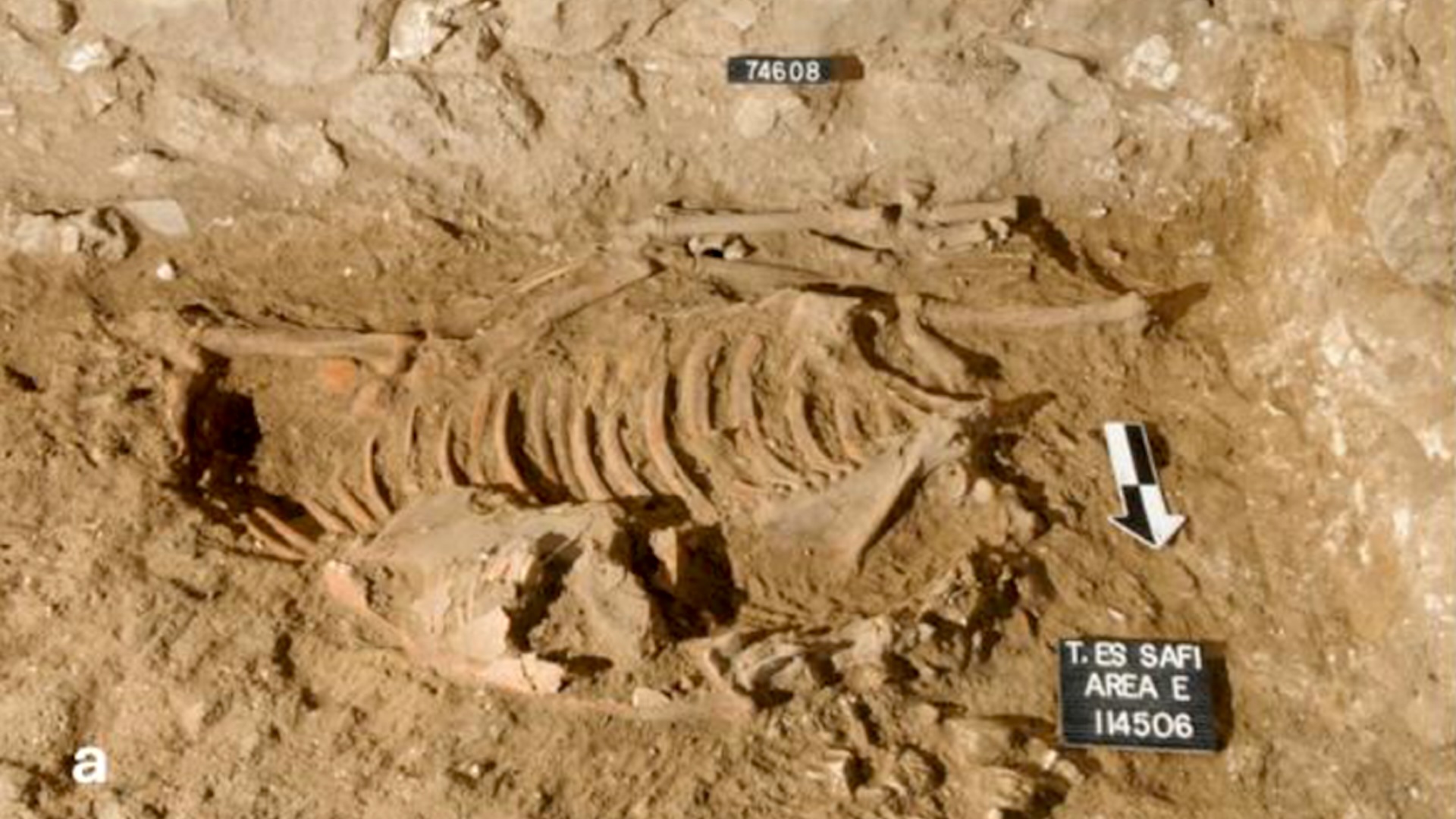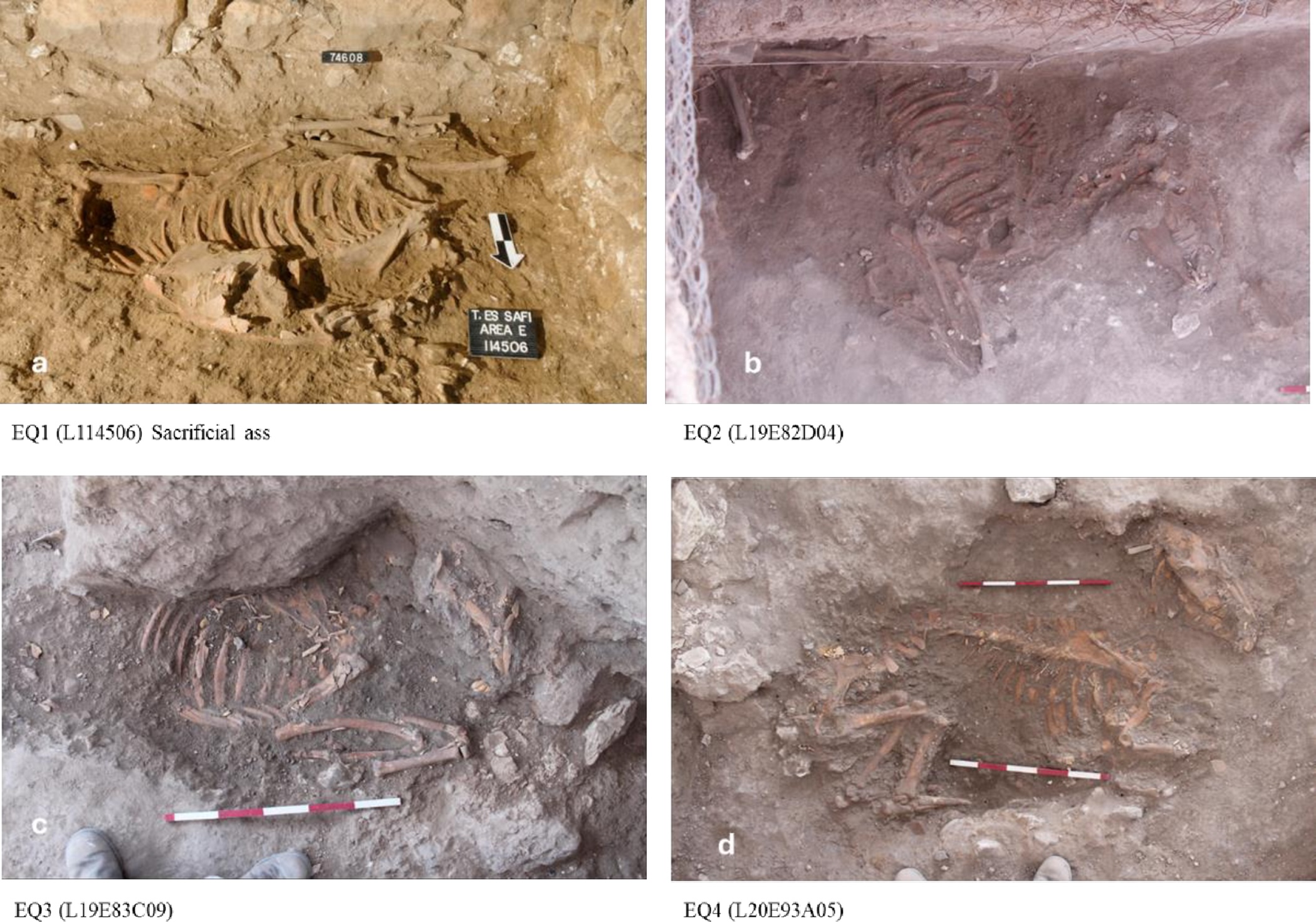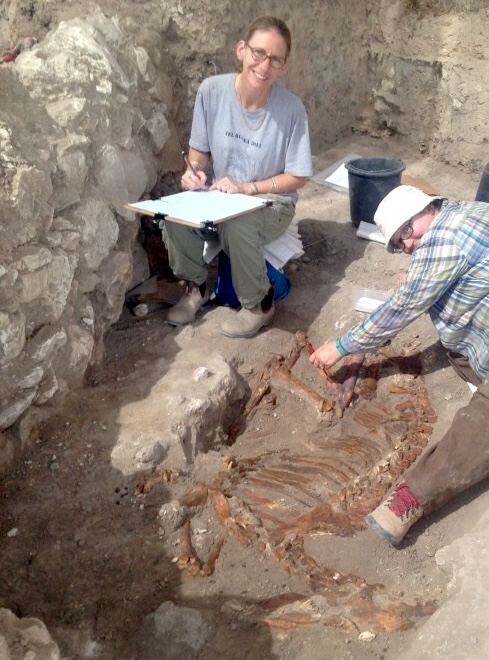Extraordinary 'sacrificial ass' with severed head discovered from Bronze Age Israel — and it was from a faraway land
The nearly 5,000-year-old remains of a "sacrificial ass" and three other donkeys from a faraway land have been discovered under a Bronze Age house in Israel.

The nearly 5,000-year-old remains of a "sacrificial ass" whose head had been severed and feet tied together have been discovered under a Bronze Age house in Israel. The donkey, as well as three others buried near it, may have been part of a ritual that involved sacrificing young, female work animals from a faraway land — ancient Egypt, researchers reported in a new study.
It's unknown why these donkeys were "killed in the prime of their lives" during Canaan's Early Bronze Age III (circa 2900 to 2550 B.C.), but the researchers think the animals' unexpected Egyptian origin hints that their owners were merchants and traders.
"To sacrifice such a key animal is an exaggerated display of wealth, or position in society," study first author Elizabeth Arnold, an anthropologist and environmental archaeologist at Grand Valley State University in Michigan, told Live Science in an email. "Selecting donkeys only from Egypt likely highlighted this connection with a key trading partner."
Egypt was exceptionally strong at this time, during the Old Kingdom period (circa 2649 to 2150 B.C.), so "highlighting this link would have further transferred prestige," she added.
"Find more donkeys"
Archaeologists have been finding the ancient remains of donkeys for years at ancient Gath (modern Tell eṣ-Ṣâfi), a city of about 59 acres (24 hectares) in central Israel, about 12 miles (20 kilometers) from the Mediterranean coast. Researchers were surprised to find the decapitated donkey in 2010. Its head had been "fully cut off and carefully placed on the abdomen facing in the opposite direction" of its body, the team wrote in the new study, which was published Wednesday (July 9) in the journal PLOS One.
Many of the same researchers tested the isotopes, or versions, of different elements in the donkey's tooth enamel; this chemical analysis can shed light on where an individual grew up based on the local food and water they consumed. The results, published in 2016 in PLOS One, found that the donkey had grown up in the Nile Valley.
Get the world’s most fascinating discoveries delivered straight to your inbox.

However, this was just one donkey. So Arnold urged excavators to "find more donkeys" in ancient Gath, "and then we did!" she said. The team found three more sacrificed donkeys buried under Bronze Age homes. Isotopic analyses revealed that they, too, were from Egypt.
These newfound donkeys' front and back legs had been trussed, or tied together. And although these donkeys hadn't been decapitated, the "skulls of all four donkeys face eastwards," possibly toward the rising sun, the authors wrote in the new study.
All of the donkeys "of prime age had been sacrificed in this special manner," Arnold said, and all of them were female. Female donkeys were especially valuable "to give in sacrifice as they would have been capable of providing more donkeys," she added.

To compare these four sacrificed donkeys to other ancient animals from Gath, the team did isotopic analyses on the remains of a donkey, sheep and goats that were also found at the site but had not been sacrificed. These animals were found to be local to ancient Gath, with the exception of one goat, the researchers reported. This goat had an Egyptian origin, they found.
"We suggest this animal came along as part of the donkey caravan as 'meals on the hoof' as that journey was made (without refrigeration to keep your meat fresh) but wasn't killed and eaten until at Tell eṣ-Ṣâfi," Arnold said. "This single goat did not have any special burial treatment."
Donkeys and other equids were used in the ancient world for agricultural labor — such as plowing, threshing and pulling heavy loads — as well as for moving goods and valuable trade items. The finding of the four sacrificed donkeys shows that these animals "played a vital role in not only economics and trade, but also in status, and ritual practices in the ancient Near East," Arnold said.

Laura is the managing editor at Live Science. She also runs the archaeology section and the Life's Little Mysteries series. Her work has appeared in The New York Times, Scholastic, Popular Science and Spectrum, a site on autism research. She has won multiple awards from the Society of Professional Journalists and the Washington Newspaper Publishers Association for her reporting at a weekly newspaper near Seattle. Laura holds a bachelor's degree in English literature and psychology from Washington University in St. Louis and a master's degree in science writing from NYU.
You must confirm your public display name before commenting
Please logout and then login again, you will then be prompted to enter your display name.
